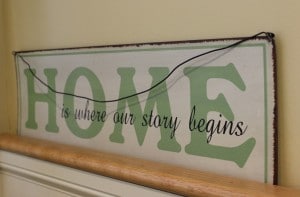We all prefer neatness and order in our home surroundings – but keeping a tidy house couldn’t be more critical to people suffering from dementia. Dementia eliminates a person’s ability to perceive depth and dimension, so when providing their living environment, it’s important to consider strategies that will assist them in discerning objects and navigating their surroundings. If you’re preparing your own home for a relative moving in, or helping a friend plan out a living space, here are three key elements to consider:
Layout and Organization: Your first goal should be to keep pathways unobstructed and overall clutter to a minimum. Key areas like bathrooms and kitchens should be fully accessible at all times; while a decorative urn or side chair might add visual interest, such non-essentials are potential hazards to someone struggling to reach the bathroom or refrigerator.
Eliminate unnecessary clutter! It can be confusing and again, potentially hazardous. A streamlined and organized environment that provides a place for everything is comforting and reassuring to a person struggling with their surroundings.
Color: Put aside what shades you might prefer and instead think strong, warm colors that work against one another to provide helpful contrasts. If your tablecloth is yellow, for example, choose blue dinner plates that are more easily recognized. A white dinner plate will disappear against a white background.
Contrast light colors from the middle of the spectrum, like yellow and green, with darker colors like red and blue, to create the most effective contrast between objects. Avoid pastel blues and lavenders; they’re difficult for elderly people to see, and often look grey. Consider using colors to call attention to useful objects, like light switches and door handles.
Patterns: Here’s an area where we have to be especially mindful of people struggling to navigate through their surroundings. Patterned floor coverings or wallpaper might be visually more interesting, but imagine Mom seeing a speckled design scheme and trying to pick up objects that aren’t there, thinking she’s looking at paper or crumbs.
Layered patterns are even more hazardous, sometimes causing people to think the floor is actually moving beneath them. And skip zigzags, plaids, and bold stripes all together; they can actually cause dizziness in dementia patients.
Creating a safe, inviting, comforting environment for your loved one will improve their quality of life, and give you peace of mind as well. Find out more about the benefits of environmentally-sensitive home design here.

